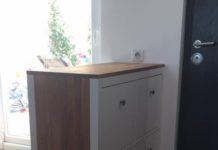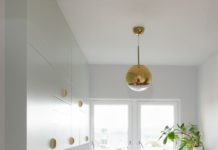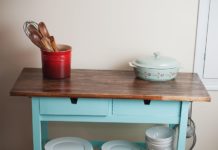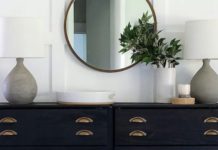Building a protective visor for the face – 4 possibilities for improvisation
Face shields are personal protective equipment (PPE) used by medical personnel (e.g. doctors, dentists, veterinarians) to protect the face area and the associated mucous membranes (eyes, nose, mouth) from aerosols or splashes of body fluids. Face shields are usually not used alone, but in conjunction with other protective equipment and are therefore classified as additional personal protective equipment. Wearing a protective visor can be one way to increase mechanical protection against coronavirus. In this article, we show you how to make such a protective visor yourself with everyday household items so that you could protect yourself and your loved ones. Or why not donate a few of them to the “Frontline” employees?

It is not known exactly when the eye protection was first used in the medical field. Recent outbreaks of serious airborne infectious diseases (e.g., Severe Acute Respiratory Syndrome (SARS), swine flu, etc.) and serious infectious agents associated with the possibility of exposure to body fluids (e.g. Ebola virus) have increased awareness of the face – / Eye protection performed. Even now, with the Corona crisis, demand is high.
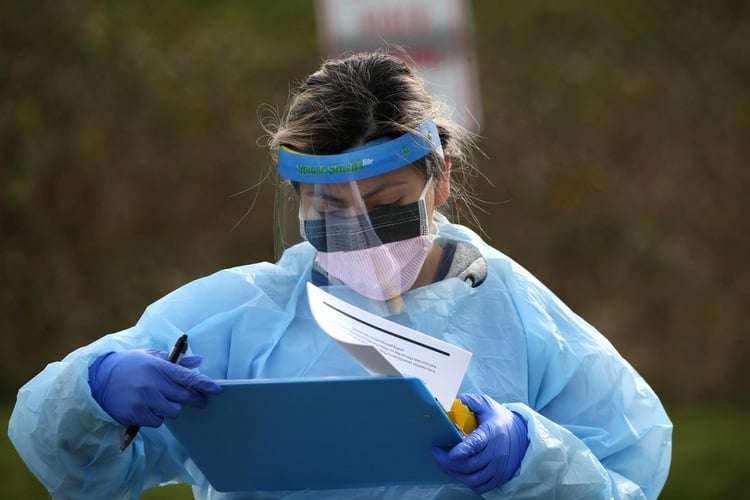
Over the past few weeks, doctors and nurses have reported a lack of protective equipment. This created a new initiative in social networks: Citizens who have the time and can sew were asked to make simple face masks. Textile companies, mattress manufacturers and even auto parts suppliers have also started making masks. 3D printing companies and private individuals have also announced a global mobilization of 3D printing resources to respond to the Covid 19 pandemic by making protective equipment for hospital workers in-house. The focus is on providing thousands of disposable face shields to medical personnel. But since very few of us have a 3D printer, we would like to show you a few possibilities for improvisation. First, let's look at the individual parts of a protective visor so you can use the information as a starting point.

Generally, a face shield consists of the following components:
– Visor. Visors are made from a variety of materials, including polycarbonate, propionate, acetate, polyvinyl chloride and polyethylene terephthalate glycol (PETG), and are available as disposable or reusable models. Acetate offers the best clarity, but polycarbonate is one of the most commonly used materials. Polycarbonate and propionate offer better, if still somewhat imperfect, optical quality that helps reduce eye strain associated with wearing face shields. Visors can be treated with modern coatings to give anti-glare, anti-static and anti-fog properties, protection against ultraviolet light (UV) and scratch resistance features to extend the life of the visor. Some models come with built-in goggles built into the visor. Most visors are curved around the face and available in different widths; wider visors offer more peripheral protection. The Centers for Disease Control and Prevention (CDC) recommendations refer to visors that are wide enough to reach at least to the ears, as this reduces the likelihood of a splash around the edge of the face shield and in the eyes can reach.

– Frame. Face mask frames used in healthcare are generally made of lightweight plastic. There are a variety of frame types, including adjustable and non-adjustable frames that fully or partially enclose the circumference of the skull, or those with glasses-like temples that are worn like standard glasses. With some frames, the visor can be folded up when not in use. A number of manufacturers offer removable frames for easy replacement of the face shield. In some models, a forehead cap is also integrated in the frame, which provides additional splash protection in the forehead area and allows a larger distance between the visor and the face, which makes it easier to wear additional PPE (e.g. safety glasses, respiratory mask). Disposable face shields are also available, equipped with a foam foam pad that provides a comfortable seal to the forehead.
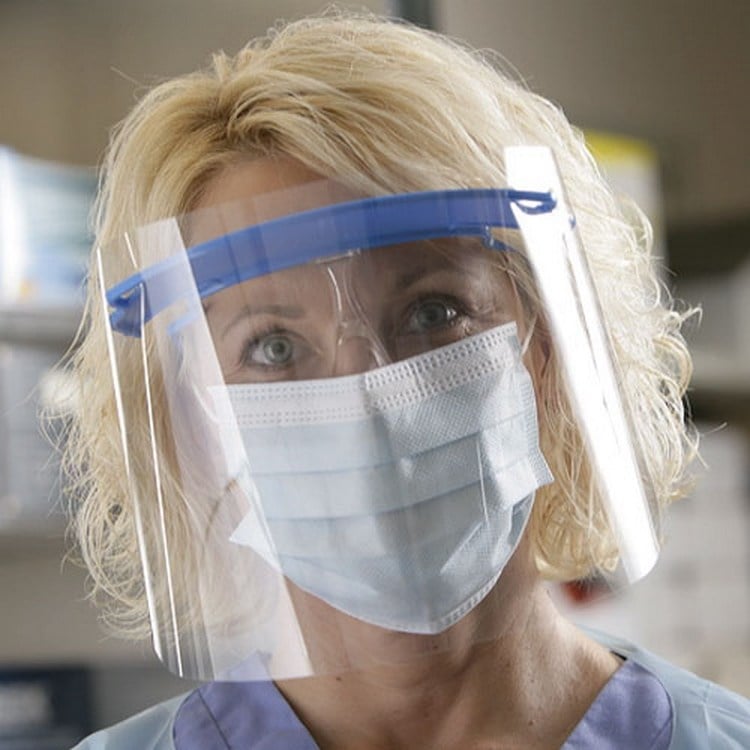
– Attachment. There are a large number of variants for fastening the face shields on the market, which either completely or partially enclose the head. Fully encircling variants include plastic headbands that are adjustable for comfort with a ratchet mechanism, pin locking systems or Velcro fasteners; non-adjustable models use elastic bands. Some models use eyeglass-like frames with or without nose pads to support the position and stability of the face shield on the face.

Protective visors with a simple Velcro fastener or elastic bands are usually the easiest to put on and take off. It can be put down with one hand. To be effective, the face shield must fit snugly to ensure a good seal in the forehead area and to prevent the visor from slipping. Visors made from acetate, propionate and polycarbonate offer improved optical clarity with the potential for less eye strain. For better protection against infectious agents, face shields should be at least the full length of the face, with the outer edges of the face shield reaching at least as far as the ear, containing chin and forehead protection and covering the forehead. Forehead pillows should be thick enough to ensure that there is sufficient space between the wearer's face and the inside surface of the umbrella for the use of additional equipment (N95 respirator, surgical mask, glasses, etc.). Due to the lack of a good peripheral face seal that allows aerosols to penetrate, face shields should not be used as sole face / eye protection, but rather as a supplement to other personal protective equipment.
Build your own Corona protective visor

The first variant consists of simple materials, but still looks very professional.
Required materials and tools:
Cover sheets DIN A4 (transparent)
elastic rubber band
Foam film (from the hardware store)
Double sided tape
Office stapler
scissors
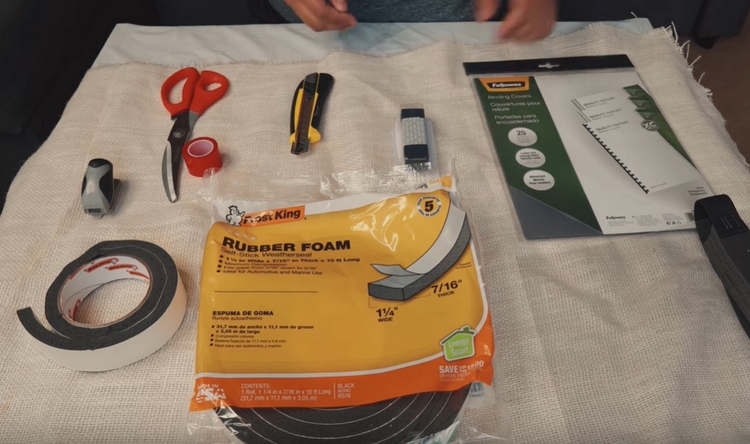
- First determine the size of the visor. A sheet of A4 has a size of approx. 20 x 30 cm. The cover page should be aligned horizontally.
- Round off the areas below, which point towards the neck, so that the corners are no longer as sharp.
- Measure the rubber band and adjust it to your head circumference. It should be about 28-30 inches long.
- Fix the ends of the rubber band to the cover sheet with a simple office tacker.
- Use self-adhesive foam film as a spacer. Cut three pieces, stack them on top of each other and glue them together. This ensures more comfort. Glue the foam film in the middle, right on the forehead.
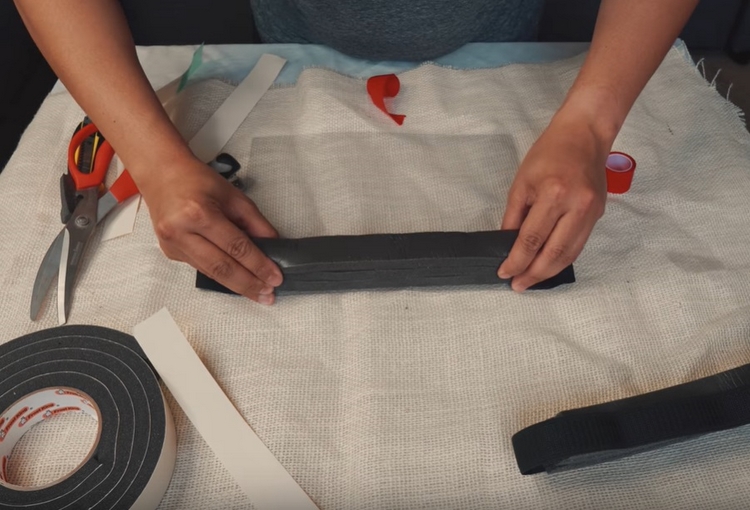
(youtube https://www.youtube.com/watch?v=HHUrSX2cJyA)
A similar visor was also developed in the Görlitz municipal clinic and is already in use. Dr. Frank shows in a video how you can also build it. For this he used laminating film and a laminator instead of cover sheets. The result is also very good!
(youtube https://www.youtube.com/watch?v=sYoVwlPpC-w)
Disposable protective visor made of plastic bottle
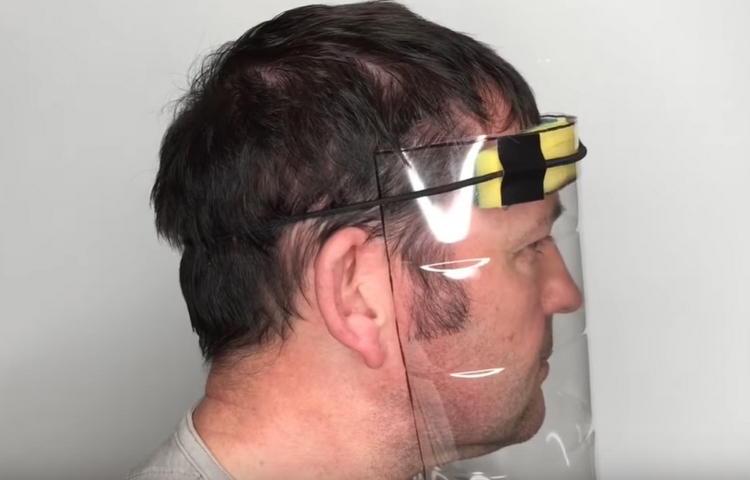
Here's another smart idea for a protective visor that is ready in less than 3 minutes. The transparent protective shield at the front is made from a 2 liter plastic bottle. The materials are inexpensive and mostly available completely in the household.
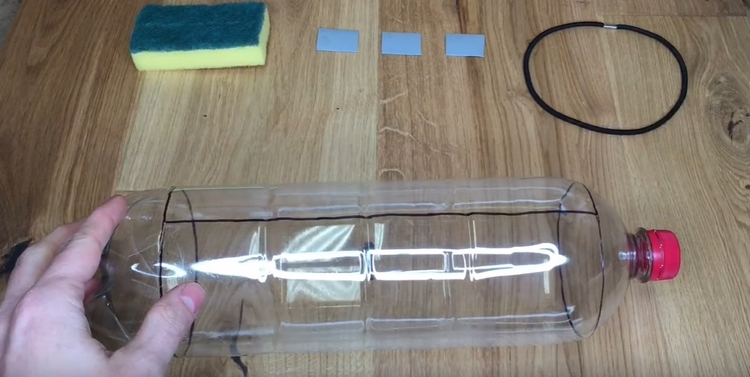
Required materials and tools:
2 liter plastic bottle
Kitchen sponge
simple, elastic hair band
duct tape
scissors
marker
- First cut out the plastic from the middle of the bottle.
- Then adjust the size to your head or face.
- A kitchen sponge is used as a spacer.
- A simple, elastic hair band is used for fastening, which is fixed to the visor with adhesive tape.
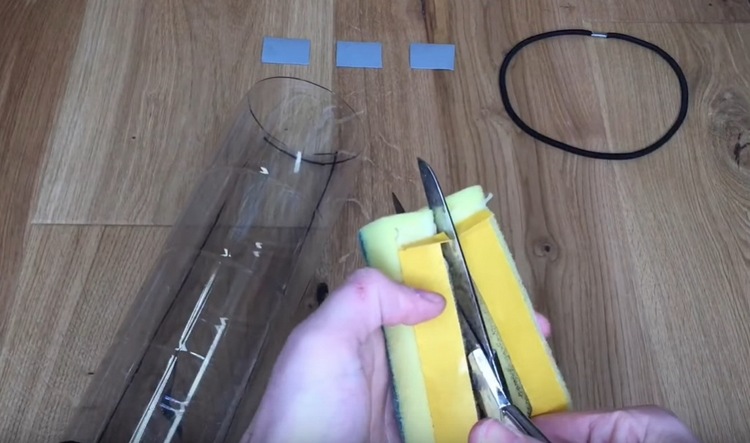
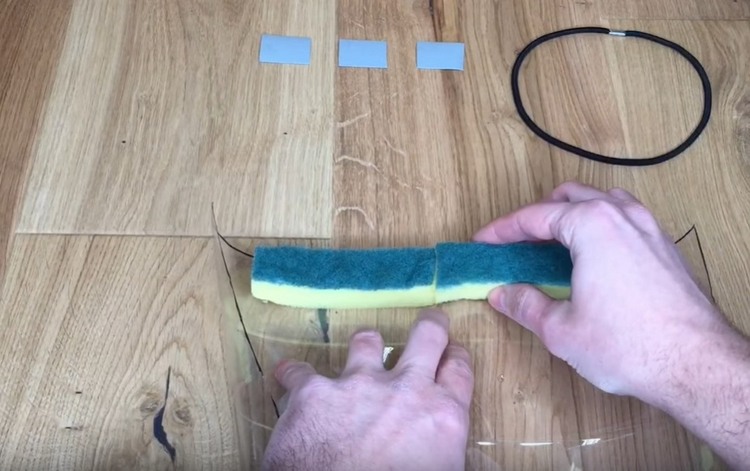

(youtube https://www.youtube.com/watch?v=dLk-oK5Ckp4)
Face protection visor attached to a cap

The next idea is for those who like to wear caps and at the same time don't want to do without a face shield. An architecture student from the Philippines developed the following concept: The protective visor is attached to the cap by means of binding clips. There is a template for the origami parts, which you also need, in the video description. Incidentally, this is also perfect for people who wear glasses.
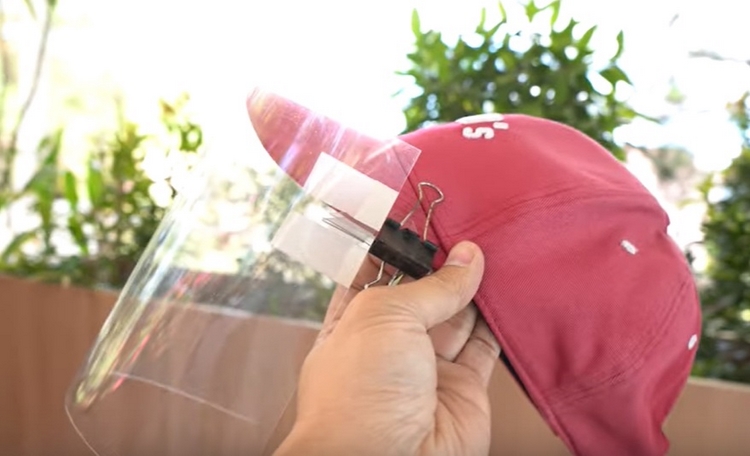
Required materials and tools:
Baseball cap
2 binding clips
cover sheet
cutter
scissors
duct tape
ruler

(youtube https://www.youtube.com/watch?v=B7dlKXmW4Gc)
Reusable protective visor made of 2 hair soaps
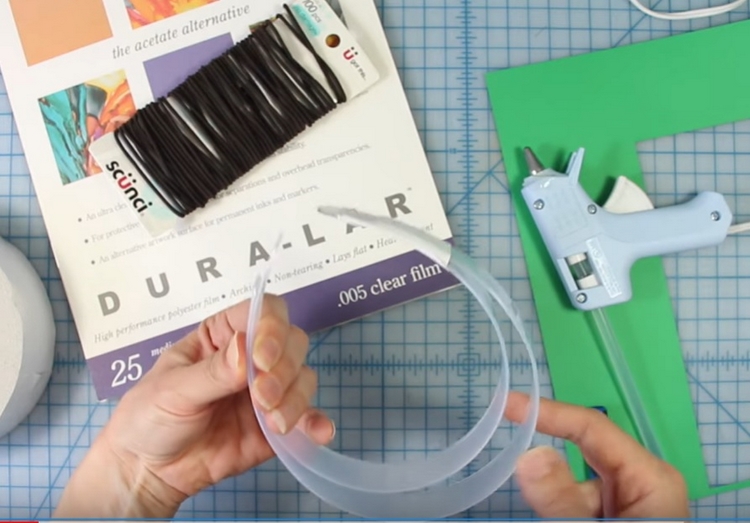
Natascha from New Jersey also came up with an interesting idea. For the frame, she used two transparent hair bands. These work well because they are easy to bend and therefore offer more flexibility. The material is also easy to disinfect. However, the gap between the hair bands should be sealed somehow, because the virus can also get through the eyes. Nevertheless, she showed creativity and even improved her first variant.
(youtube https://www.youtube.com/watch?v=owiAiM03DJE)
Proper use of face shields
The correct use of a face shield depends on the application instructions. Appropriate, indirectly ventilated goggles provide the most reliable, practical eye protection from splashes, but face shields are considered an alternative to goggles to prevent eye contamination with infectious agents. Any additional protection for the eyes has not been thoroughly investigated, although the combination of face protection and glasses is advocated for use in invasive surgery. Combining some goggles with face protection can affect visual clarity and limit peripheral vision to some extent, and these effects must be considered before use. It has also been reported that glasses fog up more than a protective visor. If a respirator is required in combination with a face shield, the glasses may not fit properly on the nose.
The use of face protection alone to protect eyes, face and mucous membranes from exposure to body fluids is likely to be inadequate, and it is recommended that a medical / surgical mask be worn in situations where face protection is used to protect against splashes .
Face shields are not intended as primary respiratory protection and should not be used alone as aerosols can get behind the visor. Therefore, a protective face mask (medical / surgical mask, N95 FFR, etc.) should be worn at the same time.
The post Building a face shield – 4 ways to improvise appeared first on Deavita.com | Living ideas, design, hairstyles, make-up, lifestyle, health and beauty tips.


